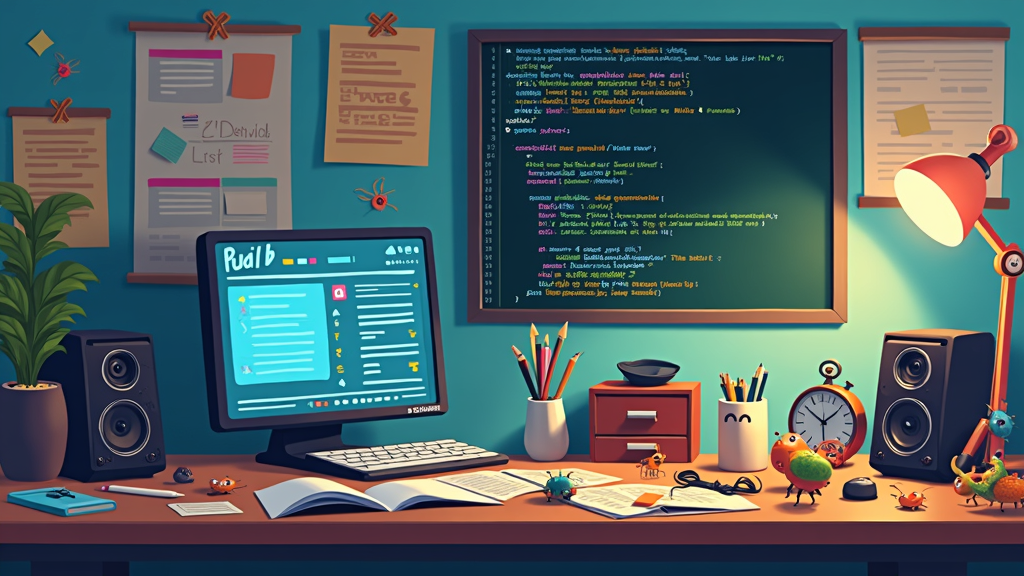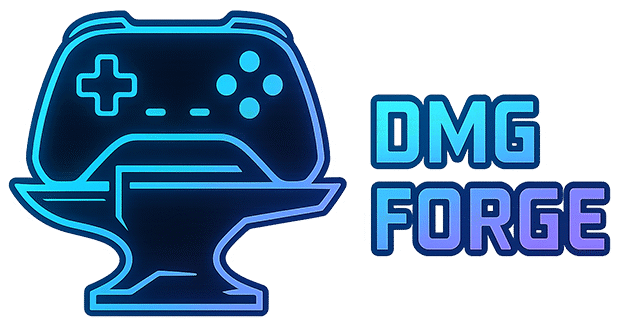Working on a long-term indie game isn’t just about killer gameplay or pixelperfect art. The code behind the scenes plays a big part in how things turn out, especially as projects stretch over months, or even years. Technical debt is that extra code mess or shortcut you take now, hoping to “fix it later.” Without some smart moves early on, that stuff just keeps piling up, slowing development and making bugs harder to squash. So, I want to walk you through real-deal ways to keep technical debt in check for your long-haul game dev adventure.

What Is Technical Debt and Why It Matters in Indie Game Projects
Technical debt comes from taking shortcuts in code or skipping best practices to get things out the door faster. Maybe it starts out as a small script here or some quick-and-dirty hack because “you’ll clean it up next week.” Over a few sprints, these little problems can pile up into something way harder to tackle, especially in games, where features switch up and prototypes get thrown out or patched onto.
Unlike regular debt, technical debt doesn’t show up on a balance sheet. But you definitely feel its weight as your project ages: bugs, confusing code, annoying rework, and delayed releases. In my experience, games that ignore their debt for too long get way more expensive (in time and money) when it’s finally time to fix things.
If you’re coming from another field, game dev brings its own flavor of chaos. Code prototypes can morph into core systems, one-off features accidentally sticking around, with sudden pivots when you stumble upon what’s fun. That’s why managing technical debt is super important for indie teams with tiny resources.
How Technical Debt Creeps Into Long-term Indie Game Projects
Even with the best intentions, technical debt finds a way in during longer game projects. Here’s how it usually sneaks up on me (and probably you, too):
- Prototype code isn’t replaced or cleaned up: Those rough scripts built to test mechanics often end up in the shipped game, spaghetti and all.
- New features bolt onto old ones: Adding a new enemy type or multiplayer support sometimes means copying and modifying old code instead of refactoring.
- Changes in scope or direction: Mid-project switches make old systems outdated but keep them lurking in the codebase, just in case you need them later.
- Not enough automated tests: Without tests, you’re more likely to patch things haphazardly, leading to hidden bugs and workarounds.
It’s not lazy or bad practice, as game teams, especially indie devs, sometimes just have to cut corners to meet a festival deadline, budget, or Steam Next Fest demo. What matters is how you handle technical debt once you’ve built up a little pile of it.
Practical Ways to Handle Technical Debt in Long-term Projects
If you want to keep technical debt from getting out of control, a few straightforward habits go a long way. Here’s how I usually handle it for games that take several years to finish:
- Keep a Debt Backlog: Every time you make a quick fix or hack, jot it down somewhere. Create a “tech debt” tag in your tracker. This honesty stops forgotten cut corners from becoming show-stoppers later.
- Regular Refactoring: Block off a day every sprint or milestone to revisit messy code. I find little “cleanup jams” make me feel less stressed than one giant crunch at the end.
- Review Old Systems: Whenever you add big new features, use the chance to look at old systems. If that enemy AI script is getting hacked up again, pause and see if it’s time to rewrite or optimize.
- Document as You Go: Future-you never remembers why a shortcut was taken. Adding quick comments, notes, or readmes saves hours of guesswork later on.
- Automated Tests and CI: Even for indies, a few basic test scripts (unit tests for math helpers, smoke tests for game launch) help you catch bugs fast without feeling overwhelmed.
By being intentional and scheduling fixes, you avoid the all-at-once “technical debt meltdown” that can completely stall game launches.
How to Minimize Technical Debt in Game Development
Preventing debt from stacking up is way better than constantly scrambling to fix it. Here’s what actually helps minimize technical debt in my own indie projects:
- Start simple and modular: Break systems down into small, reusable pieces. For example, make your item logic a plugin component and avoid hardcoding everything into the player controller.
- Stick to a style guide: Even a basic one helps everyone on the team (or just you, months later) write code in a way that’s consistent and readable. Name things in patterns, organize files, and use comments.
- Refactor early and often: Don’t wait for the “perfect time.” Tweak, rename, and break out code into clearer methods or scripts as soon as you notice a pattern.
- Prioritize code review, even solo: When working alone, come back to old code after a couple weeks with fresh eyes. Or get another dev friend to check your logic.
Saying no to unplanned features or securing a little extra time for polish will help, too. You don’t need to goldplate every line, just leave things better than you found them whenever possible.
Another helpful strategy is integrating brief self-assessments or code walkthroughs after each major milestone. By quickly looking over what was added, you’re more likely to spot sneaky shortcuts or potential issues before they snowball. In addition, connecting with online dev communities can provide fresh perspectives and reliable advice when you’re unsure how to move forward with particularly gnarly code sections. These touchpoints keep you engaged and on track, even when solo.
The Four Quadrants of Technical Debt
Not all technical debt is created equal. Understanding the four quadrants of technical debt helps you decide what to fix right away versus what can wait. Here’s how I remember them, adapted from Martin Fowler’s model:
- Prudent & Deliberate: You knowingly take on debt for a strategic reason (like a quick prototype for a pitch), with a plan to fix it later.
- Reckless & Deliberate: You cut corners on purpose, knowing it’s risky, but skip making plans to pay that debt back.
- Prudent & Inadvertent: You make the best decisions with limited info, but later track down a better way. Usually happens with new tech or design paradigms.
- Reckless & Inadvertent: Unintentional mistakes or misunderstandings that add up, often because of missing knowledge or skipped reviews.
Spotting which quadrant your debt lives in helps you focus. Try to stay on the “prudent” side whenever you can, and be honest about any reckless choices. Over time, mapping out which areas of your project regularly fall into the reckless or inadvertent zones gives you a better sense of where your process or learning could use a boost.
Two Options for Reducing Technical Debt
Reducing technical debt doesn’t have to be complicated. If you’re looking for concrete, everyday options, two that make a real difference are:
- Refactoring: Revisiting messy areas to clean up, simplify, or break things into smaller pieces. This is a cheap way to fight entropy in your codebase and usually pays off quickly. In Unity or Godot, this could mean splitting a monolithic script into reusable components.
- Automated Testing: Adding or improving automated tests (unit, integration, regression) protects you as you fix things, making sure new changes don’t break old features. Even a handful of tests are worth the time.
Some teams also put out more documentation or dedicate a sprint purely to “debt rescue” work. Picking a method that works for your team size and timeline is key to keeping the project healthy without hitting burnout. You can also tie debt reduction to game testing sessions—before playtesting, catch up on debt so new bugs don’t pile on top of old ones.
Barriers and Strategies for Tackling Technical Debt in Indie Teams
Time and money are always tight in indie development, so it’s easy to push debt cleanup down the road. Here’s how I sidestep the usual pain points:
- Schedule mini cleanup sessions: Take one to two hours every couple weeks to fix something that’s gotten out of hand. It’s less daunting than giant refactor sessions and keeps morale up.
- Celebrate cleanup “wins”: Sharing before-and-after screenshots or game logs is oddly motivating, even for solo developers. If possible, keep a running list of these wins to keep your energy high.
- Use debttracking tools: Simple spreadsheets, Trello boards, or built-in issue trackers make debt visible and ensure nothing’s forgotten in the shuffle.
- Balance features and fixes: Try to balance new feature work with technical debt cleanup. If a feature breaks often, prioritize fixing the base code before polishing.
If your team is bigger, assign “codebase guardian” roles to rotate the responsibility for keeping debt in view. For solo devs, a monthly code retrospective—spending an hour looking back at what you’ve tackled, what piled up, and where you want to head—can be invaluable.
Frequently Asked Questions
Question: How do you handle technical debt in a long-term indie project?
Answer: Make it visible with a backlog, refactor steadily, and schedule regular code reviews. Breaking down fixes into manageable tasks goes a long way in keeping things under control.
Question: How can I minimize technical debt for my indie game?
Answer: Stick to modular code, use clear naming conventions, avoid unnecessary features, and clean up as you go. Document your intentions and add basic testing, even if automated coverage isn’t perfect.
Question: What are the four quadrants of technical debt?
Answer: The four quadrants are Prudent & Deliberate, Reckless & Deliberate, Prudent & Inadvertent, and Reckless & Inadvertent. Knowing where your debt fits helps you decide what to tackle first.
Question: Which two options reduce technical debt on a project?
Answer: Refactoring code and implementing automated tests are two everyday ways to make a clear dent in technical debt for both solo and team projects.
Keeping Your Indie Game Codebase Healthy
Taking care of technical debt isn’t just about making your code pretty—it frees up time for more creative work and reduces pain points during crunch time. Even small, steady improvements make a huge difference over the lifetime of a long-term indie game, making launches smoother and updates way less stressful.
Stay honest about shortcuts, schedule time for cleanup, and keep learning new ways to keep your code flexible. Your future self and probably your players will thank you.
